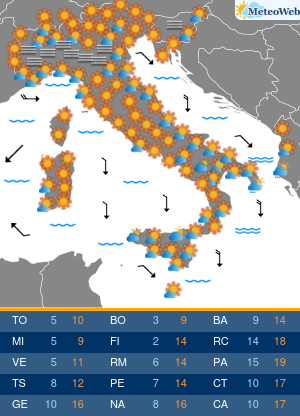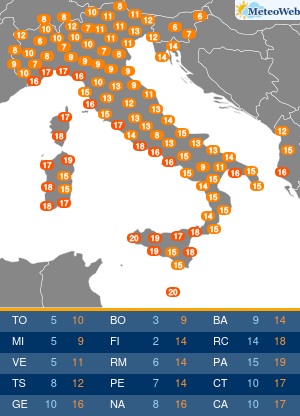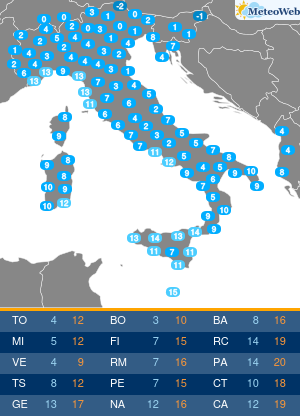Almeno 2 vittime sono state attribuite alla tempesta Dennis che nel weekend ha colpito Irlanda e Regno Unito, portando forti venti e inondazioni. Nel Regno Unito è stato impiegato l’esercito per aiutare contro le inondazioni.
Sabato 15 febbraio, la pressione centrale della tempesta è scesa fino a 920hPa, che l’ha fatta diventare una delle tempeste più forti mai osservate nel Nord Atlantico. Venerdì 14 febbraio, a Reykjavik, capitale dell’Islanda, è stata registrata una raffica di 112km/h, mentre nella città di Keflavik è stata registrata una raffica di 143km/h. Nel Regno Unito, invece, sabato 15 febbraio, è stata misurata una raffica di 150km/h a Cairngorm Summit, nelle montagne scozzesi, mentre l’Aeroporto di Liverpool ha riportato raffiche di 75km/h. E i forti venti hanno colpito il Regno Unito anche nella giornata di domenica 16. Raffiche di 130km/h sono state comuni, con quelle più intense che hanno raggiunto i 180km/h a Bealach Na Ba, nelle Highlands scozzesi, 173km/h sulla montagna Aonach Mor, 148km/h sulla montagna Great Dun Fell, 145km/h sulla montagna Cairn Gorm Summit, 137km/h a Capel Curig.
Dopo il passaggio della tempesta Ciara nella stessa area appena una settimana prima, il terreno già umido e gli alberi indeboliti hanno contribuito ad espandere i blackout nel corso del weekend. Sono stati riportati diffusi quantitativi totali di 50-100mm; in alcune aree, è caduta la quantità di pioggia di oltre un mese in 48 ore. La Crai Reservoir in Galles ha registrato i più alti quantitativi di pioggia, con 157,6mm. Proprio il Galles ha subito il peggio della tempesta Dennis. Round di forti piogge hanno trasformato le strade in fiumi e causato frane nell’area (vedi foto della gallery scorrevole in alto e video in fondo all’articolo). Le piogge hanno fatto crescere i livelli dei fiumi nell’area, con centinaia di allerte per inondazioni in vigore in tutto il Regno Unito.
Oltre ai venti e alle forti piogge, un alto fattore sono state anche le enormi onde. Quando la tempesta ha iniziato a sferzare l’Islanda venerdì 14 febbraio, ha prodotto anche onde terrificanti, che in oceano aperto hanno raggiunto i 19,5 metri. Avvicinandosi alla terraferma, hanno raggiunto altezze di 12 metri, secondo il National Weather Service Ocean Prediction Center (OPC). Queste onde hanno provocato inondazioni ed erosione costiere per tutta la durata della tempesta nell’Irlanda occidentale, nell’Irlanda del Nord e nella Scozia.
Dennis ha provocato il dirottamento e la cancellazione di tantissimi voli da e per il Regno Unito. Tra gli aeroporti Heathrow e Gatwick di Londra, sono stati cancellati oltre 170 voli nella giornata di sabato e altre 150 cancellazioni e 800 ritardi il giorno seguente.
Forti venti continueranno a colpire il Regno Unito e il Nord Europa anche nella giornata di oggi, lunedì 17 febbraio.

















































































































![Maltempo, Gran Bretagna in ginocchio per la Tempesta Dennis: immagini terribili da Crickhowell [GALLERY]](https://www.meteoweb.eu/wp-content/uploads/2020/02/tempesta-dennis-gran-bretagna-16-febbraio-2020-22-150x150.jpg)
![Maltempo, Gran Bretagna in ginocchio per la Tempesta Dennis: immagini terribili da Crickhowell [GALLERY]](https://www.meteoweb.eu/wp-content/uploads/2020/02/tempesta-dennis-gran-bretagna-16-febbraio-2020-17-150x150.jpg)
![Maltempo, Gran Bretagna in ginocchio per la Tempesta Dennis: immagini terribili da Crickhowell [GALLERY]](https://www.meteoweb.eu/wp-content/uploads/2020/02/tempesta-dennis-gran-bretagna-16-febbraio-2020-20-150x150.jpg)
![Maltempo, Gran Bretagna in ginocchio per la Tempesta Dennis: immagini terribili da Crickhowell [GALLERY]](https://www.meteoweb.eu/wp-content/uploads/2020/02/tempesta-dennis-gran-bretagna-16-febbraio-2020-26-150x150.jpg)
![Maltempo, Gran Bretagna in ginocchio per la Tempesta Dennis: immagini terribili da Crickhowell [GALLERY]](https://www.meteoweb.eu/wp-content/uploads/2020/02/tempesta-dennis-gran-bretagna-16-febbraio-2020-13-150x150.jpg)
![Maltempo, Gran Bretagna in ginocchio per la Tempesta Dennis: immagini terribili da Crickhowell [GALLERY]](https://www.meteoweb.eu/wp-content/uploads/2020/02/tempesta-dennis-gran-bretagna-16-febbraio-2020-15-150x150.jpg)
![La tempesta Dennis si abbatte sul Regno Unito: 2 morti, centinaia di voli cancellati. Allerta per venti a 150km/h e inondazioni [FOTO]](https://www.meteoweb.eu/wp-content/uploads/2020/02/tempesta-dennis-regno-unito-27-150x150.jpg)
![La tempesta Dennis si abbatte sul Regno Unito: 2 morti, centinaia di voli cancellati. Allerta per venti a 150km/h e inondazioni [FOTO]](https://www.meteoweb.eu/wp-content/uploads/2020/02/tempesta-dennis-regno-unito-35-150x150.jpg)
![La tempesta Dennis si abbatte sul Regno Unito: 2 morti, centinaia di voli cancellati. Allerta per venti a 150km/h e inondazioni [FOTO]](https://www.meteoweb.eu/wp-content/uploads/2020/02/tempesta-dennis-regno-unito-30-150x150.jpg)
![La tempesta Dennis si abbatte sul Regno Unito: 2 morti, centinaia di voli cancellati. Allerta per venti a 150km/h e inondazioni [FOTO]](https://www.meteoweb.eu/wp-content/uploads/2020/02/tempesta-dennis-regno-unito-29-150x150.jpg)
![La tempesta Dennis si abbatte sul Regno Unito: 2 morti, centinaia di voli cancellati. Allerta per venti a 150km/h e inondazioni [FOTO]](https://www.meteoweb.eu/wp-content/uploads/2020/02/tempesta-dennis-regno-unito-28-150x150.jpg)
![La tempesta Dennis si abbatte sul Regno Unito: 2 morti, centinaia di voli cancellati. Allerta per venti a 150km/h e inondazioni [FOTO]](https://www.meteoweb.eu/wp-content/uploads/2020/02/tempesta-dennis-regno-unito-22-150x150.jpg)








